
Alba Fucens should never be missed off the list of places to visit when exploring Abruzzo. Unlike so many more of its famous cousins, these Roman ruins allow you the freedom of more often than not being completely alone as you clamber about, enabling your imagination to fully run riot.
With a still-standing amphitheatre, it’s possible to sit on the carved rock-tiered benches where once those echoing cheers from legionnaires & their families drove on the world’s most famous vegetarians, the gladiators, to bloodily entertain them whilst they were stationed at the Roman outpost of Alba Fucens. If you like the dark and aren’t claustrophobic you can still take a walk in the underground tunnels beneath the amphitheatre and visualise the pacing that went on down here before combat.

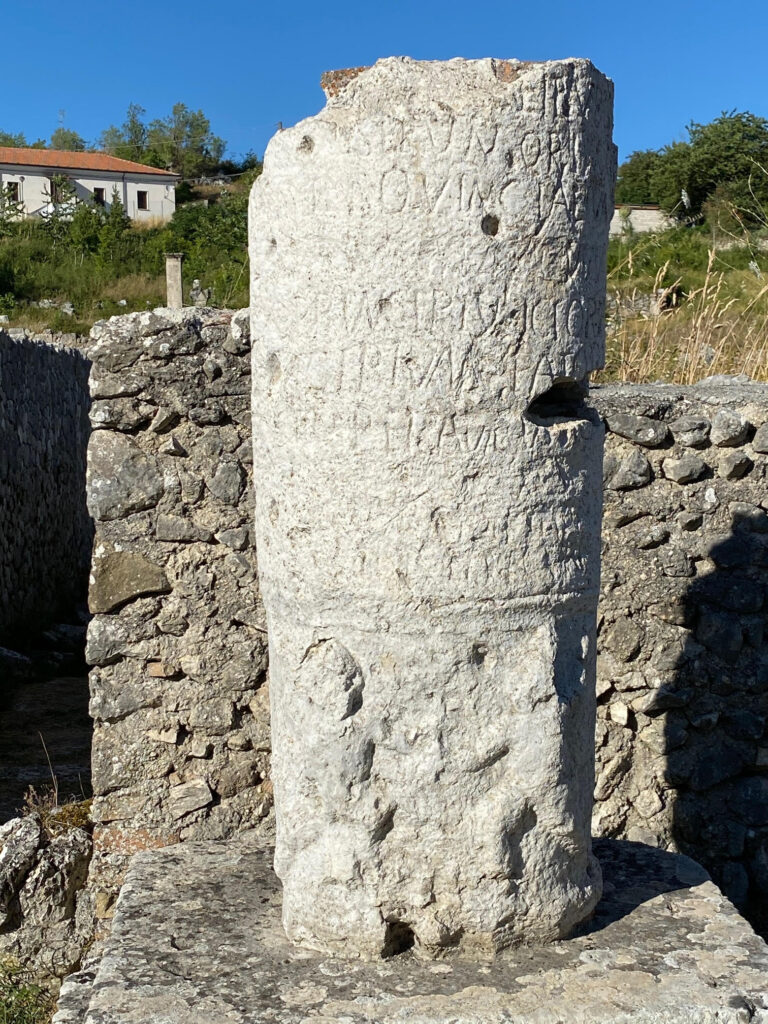

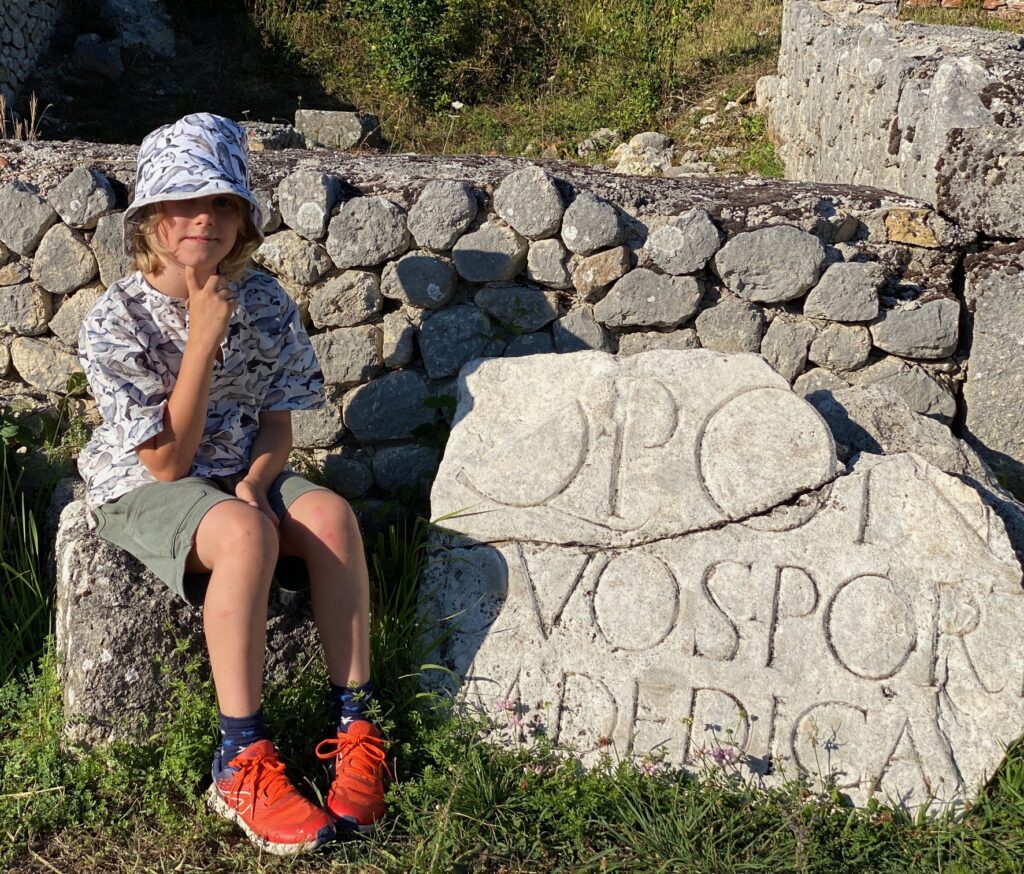
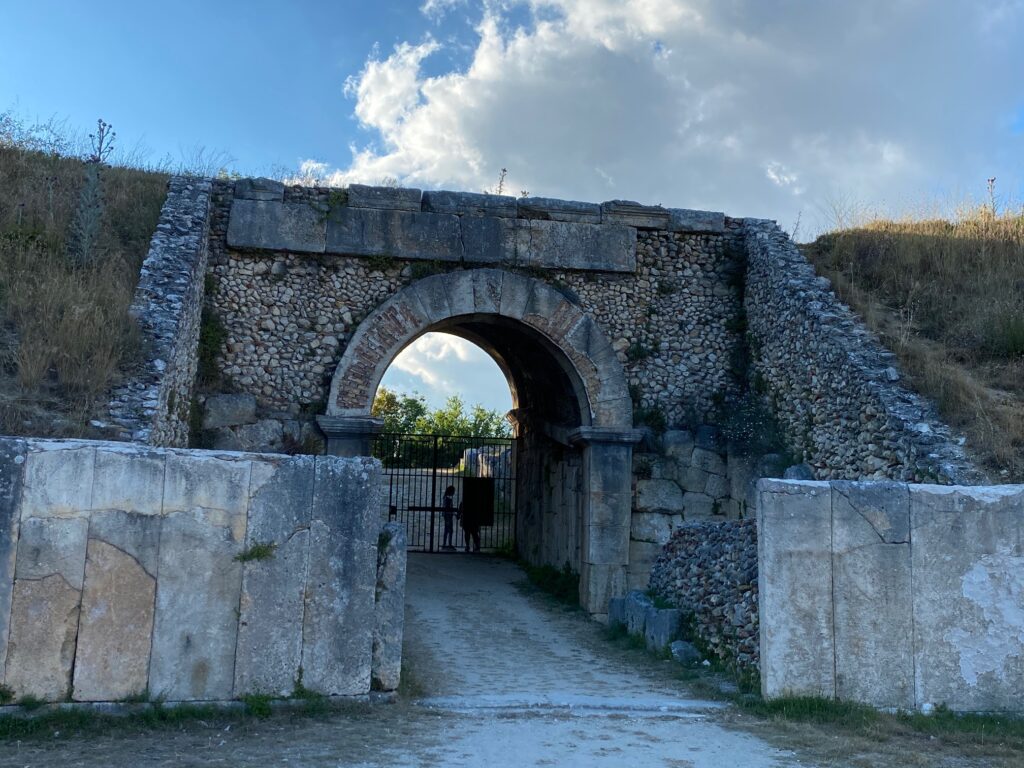
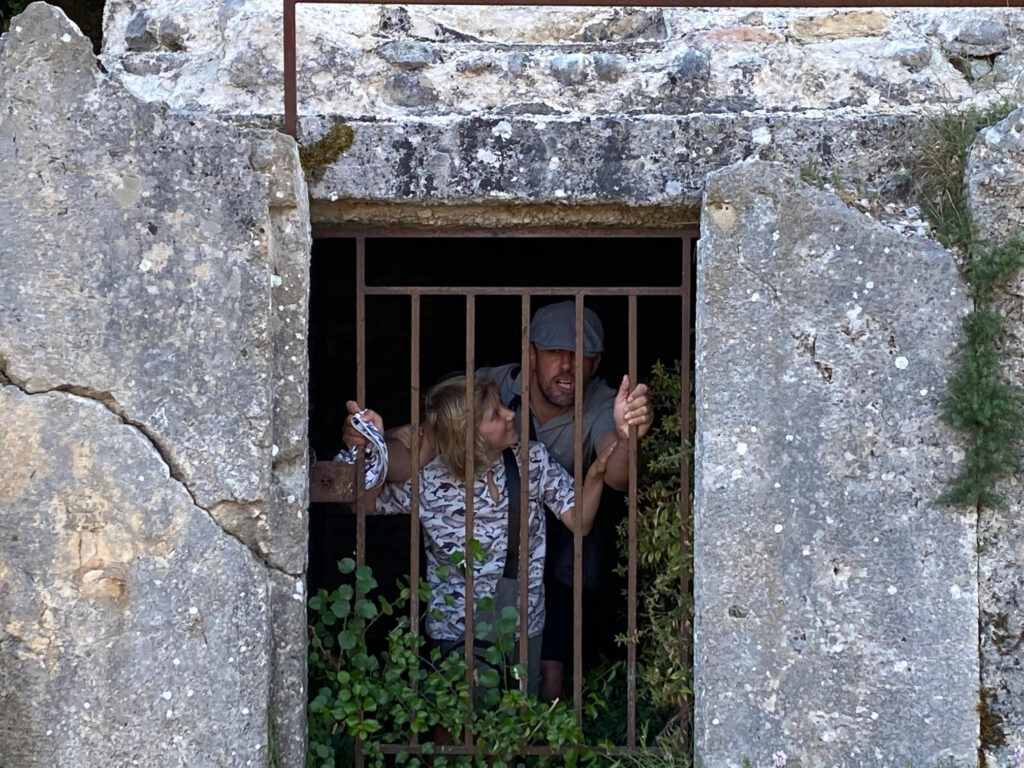
Alba Fucens & Albe, the small town that sits behind the archaeological site are shadowed by the 2486 masl peaks of nearby Mount Velino and Majella range whose stark high level greys sets off perfectly the explosion of wild flowers across the site late Spring. Clover loves the stone, almost cushioning each from the human footprints, whilst the buzz of joyous honeybees has to be heard to be believed, it’s not just nectar for history buffs but a thriving nectar point to make the divine local honey.
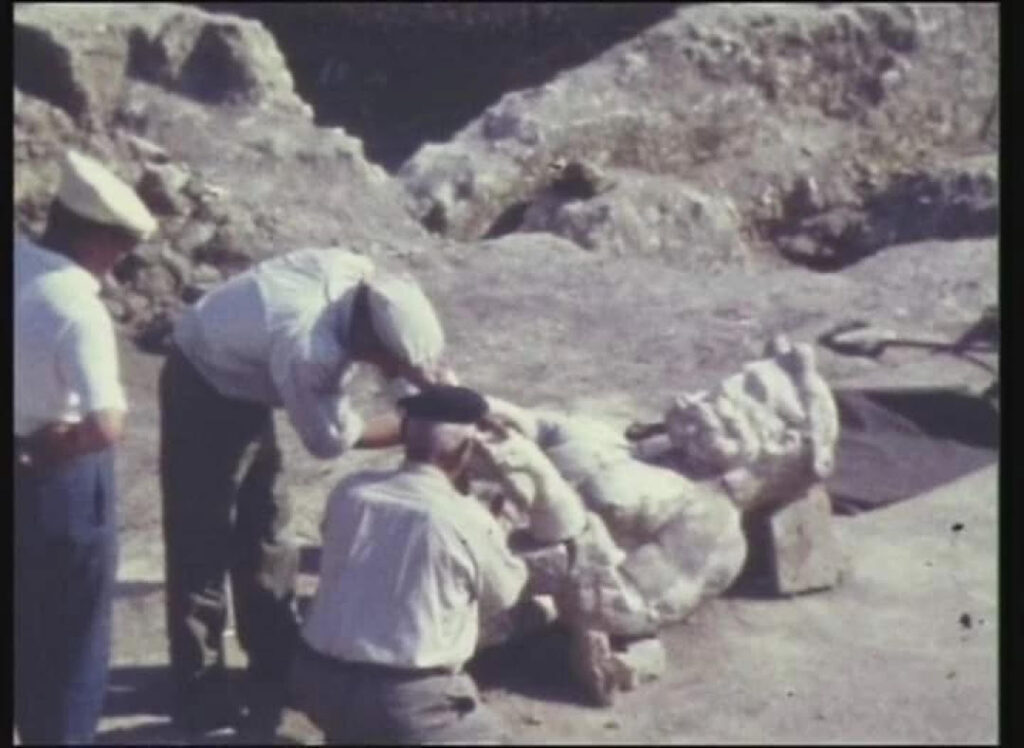
Alba Fucens’ Hercules discovered 1960
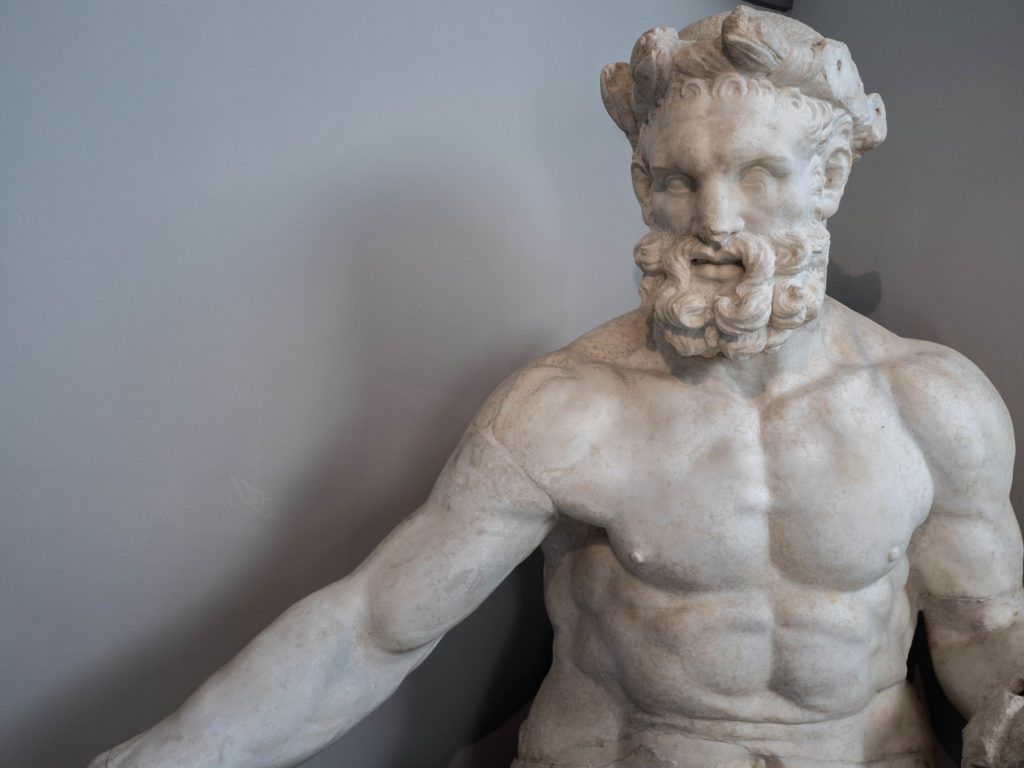
Alba Fucens Hercules, Available to view at Chieti’s Villa Frigerj, National Archaeological Museum of Abruzzo
Abruzzo’s archaeological jewel in the crown was ordered by Maximian in 302 BC when Rome sent 3000 legionnaires & their families on an unenviable mountainous walk to colonise the local Marsi. Just one of Caesar’s spikey thorns-in-side, the Marsi had been supporting the Samnites and even supplying men to Hannibal on his failed march on Rome. By 303 BC they had surrendered and the decision was made in Rome to build a strategic garrison. Set within a 3 km walled radius, the settlement served as both a garrison and trading outpost before an earthquake in C4th AD saw its final collapse.
The Alba Fucens site was primarily excavated by Joseph Mertens a Professor at Belgium’s University of Louvain. He has created an artist rendering of the city complete with its 4 portals, forum, thermal baths, amphitheatre, houses & sewage system whose remains with the map it is possible to make out without too much double guessing. Sadly the tourist office there only displays this, seemingly not giving handouts, so either take a picture of their poster display on your digital camera or phone to refer to or print it out ready.
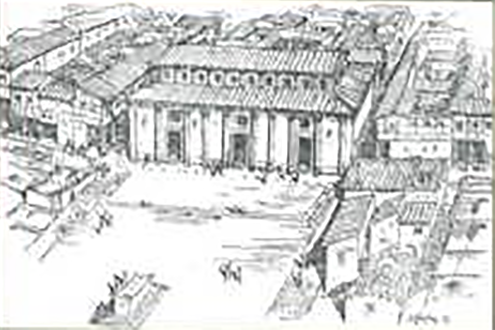
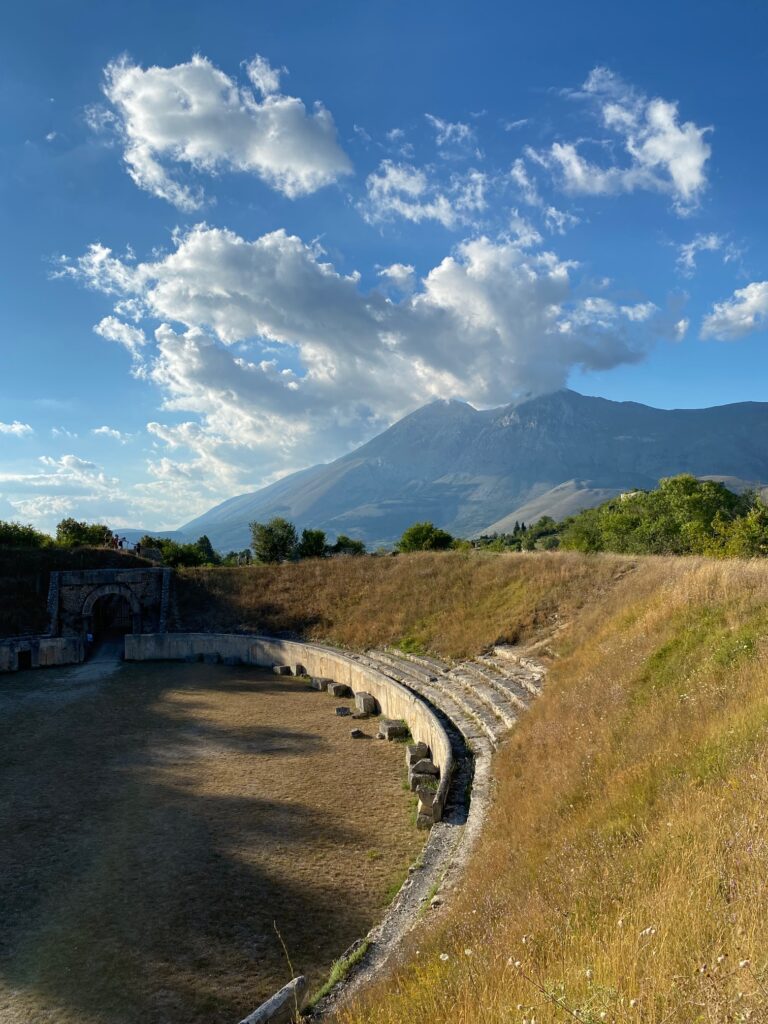
Famous for: Jean-Marie Straub & Daniele Huillet’ film Moses & Aaron that was filmed at the site.
Entrance: Free
Further Reading
Official Alba Fucens website – in English
Language Tip: Albe = Settlement on a hill: Alba=Dawn
Alba Fucens on the Map


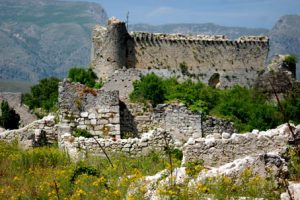
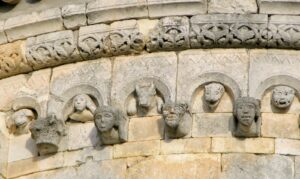
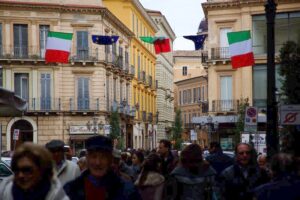
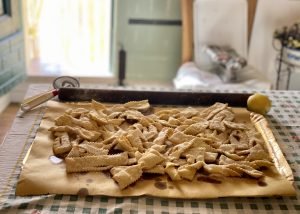
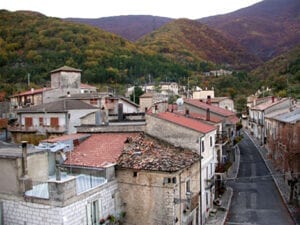

Great write up of a favourite spot of mine. It's interesting up by the old castle too where you can see what remains of the medieval village. Of course, it's not far to Rosciolo too, where the church ofSanta Maria in Valle Porclaneta sits on the outskirts. A real gem and a good place to start a walk from along the base of Monte Velino.
The castle is great isn't it! We'll be publishing our visit there next week and where we had a lovely lunch